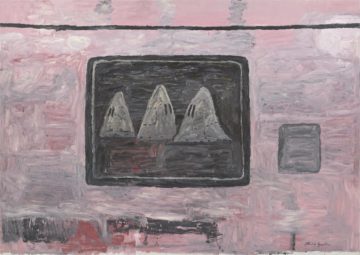 Zoé Samudzi in Jewish Currents:
Zoé Samudzi in Jewish Currents:
IT’S NOT ALWAYS ADVANTAGEOUS for an exhibition’s reputation to precede it. If critical consensus or controversy about a show’s contents can build anticipation, it can also stand between viewers and the works before them, teaching them to see only what they expect. But it’s all the more disconcerting when the exhibit itself preemptively shapes attendees’ affective responses. Before entering the Philip Guston Now retrospective, which closed at Boston’s Museum of Fine Arts in September and is on view until January at the Museum of Fine Arts in Houston, audiences are invited to take a printed handout: an “Emotional Preparedness Guide” featuring comments from a trauma consultant who advised the show’s curatorial team.
“It is human to shy away from or ignore what makes us uncomfortable,” the flyer begins, “but this practice unintentionally causes harm.” It then encourages museumgoers to “lean into the discomfort of confronting racism on an experiential level,” a process aided by the pursuit of “self-care, rest, education, and community.” The boilerplate social justice language seems designed to facilitate an encounter with violent content while acknowledging its potential to cause distress. But if the warning appears defensive, there’s a reason: It points directly to a previous institutional error. Two years ago, the museums organizing the show made the controversial decision to postpone it on the grounds that the racial imagery in Guston’s work required “additional perspectives and voices” to give it context. Philip Guston Now is their floundering attempt to do so.
More here.
